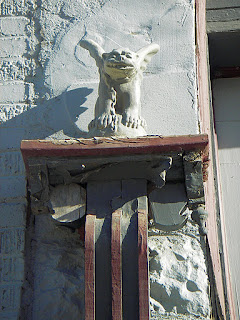
It's the last day of the year 2009, and the thing that most grabbed my attention was hearing that Tasmanian Devils are threatened by extinction from a contagious cancer.
You could try to picture what a Tasmanian Devil looks like, but you will probably keep coming up with the image of a cartoon devil .
It's their noise and the aggression which must have earned Tasmanian Devils their name. They might be called cute if their behavior was nicer.
It seems that the sound and the fury of the Devil is accompanied by biting. We aren't talking about the proverbial love bite which, at least in humans, doesn't break the skin, and in a state of arousal is considered enjoyable by some. No, we are talking about Devil confrontation and combat.
The cancer that afflicts the Tasmanian Devil, only one of two types of contagious animal cancers, is found in the Devils' mouths, because that is the weapon they use in their mating battles. Their teeth puncture a site, and the cancer is transferred by injection.
It is reported that approximately 70% of the total Devil population has already died from this disease. Scientists and doctors are not without a clue. They have found that it originates in the Schwann cells. These are nerve cells, and the problem involves the myelin sheath which coats the nerves like plastic on an electric wire. The myelin sheath protects the nerve. When the correct function of the sheath is disrupted, disease occurs.
Multiple sclerosis is one of many afflictions in humans caused by a disease process of the myelin sheath. If the sheath wears thin or is lacking in any way, the result is the jerking motor movements associated with these diseases.
Malnutrition, alcoholism, and other factors can play a part in demyelination. Babies are sometimes born with incomplete myelination. The choppy movments of their arms reveal this, but happily, most babies continue to form myelin as they develop, outgrowing their uncoordinated movements. This is another good reason to insure that pregnant mothers and babies receive superior nutrition.
In our long list of prayers for understanding and cures, let's add this one, not just for the sake of Tasmanian Devils, but also because research might uncover new information that could help humans as well.



